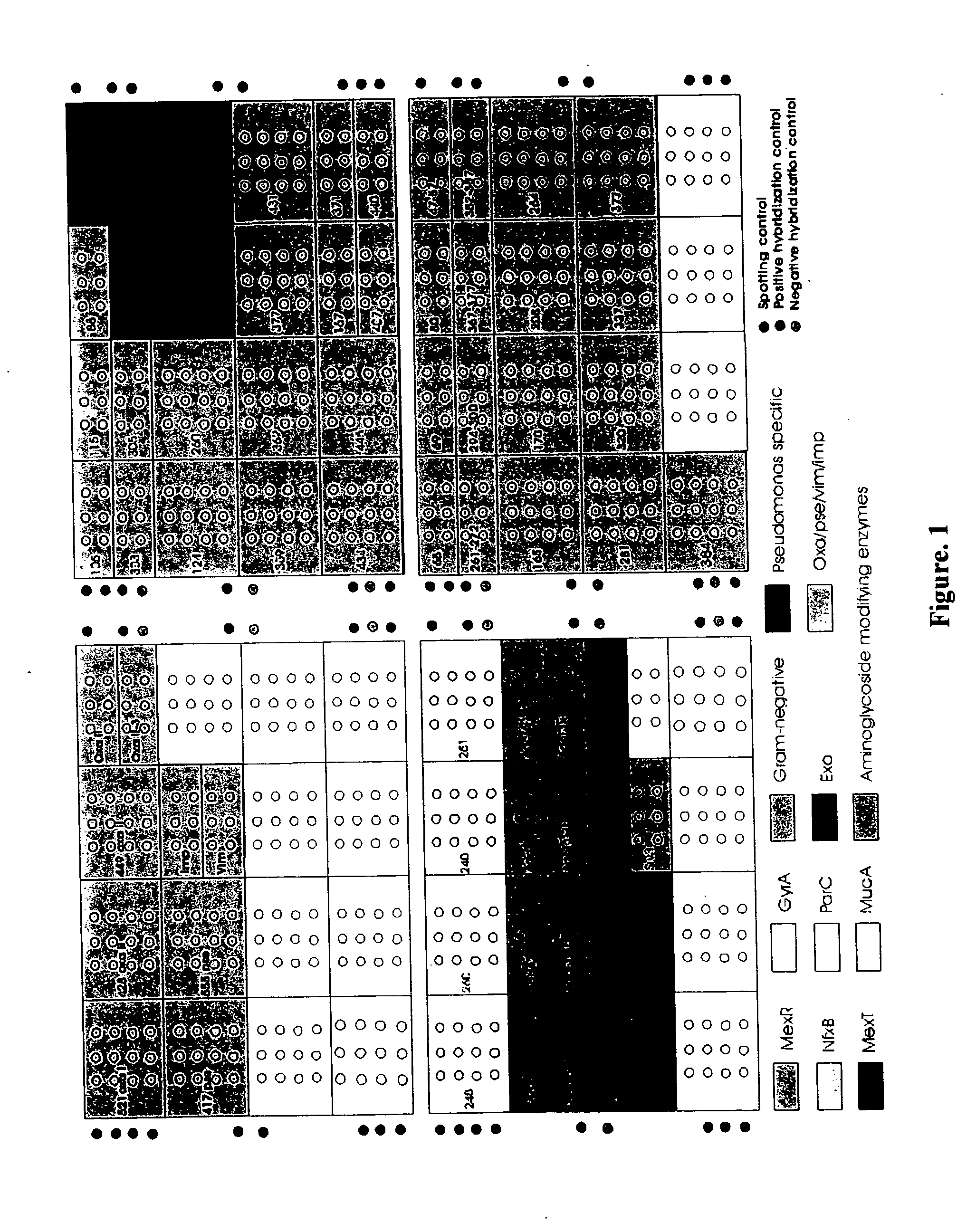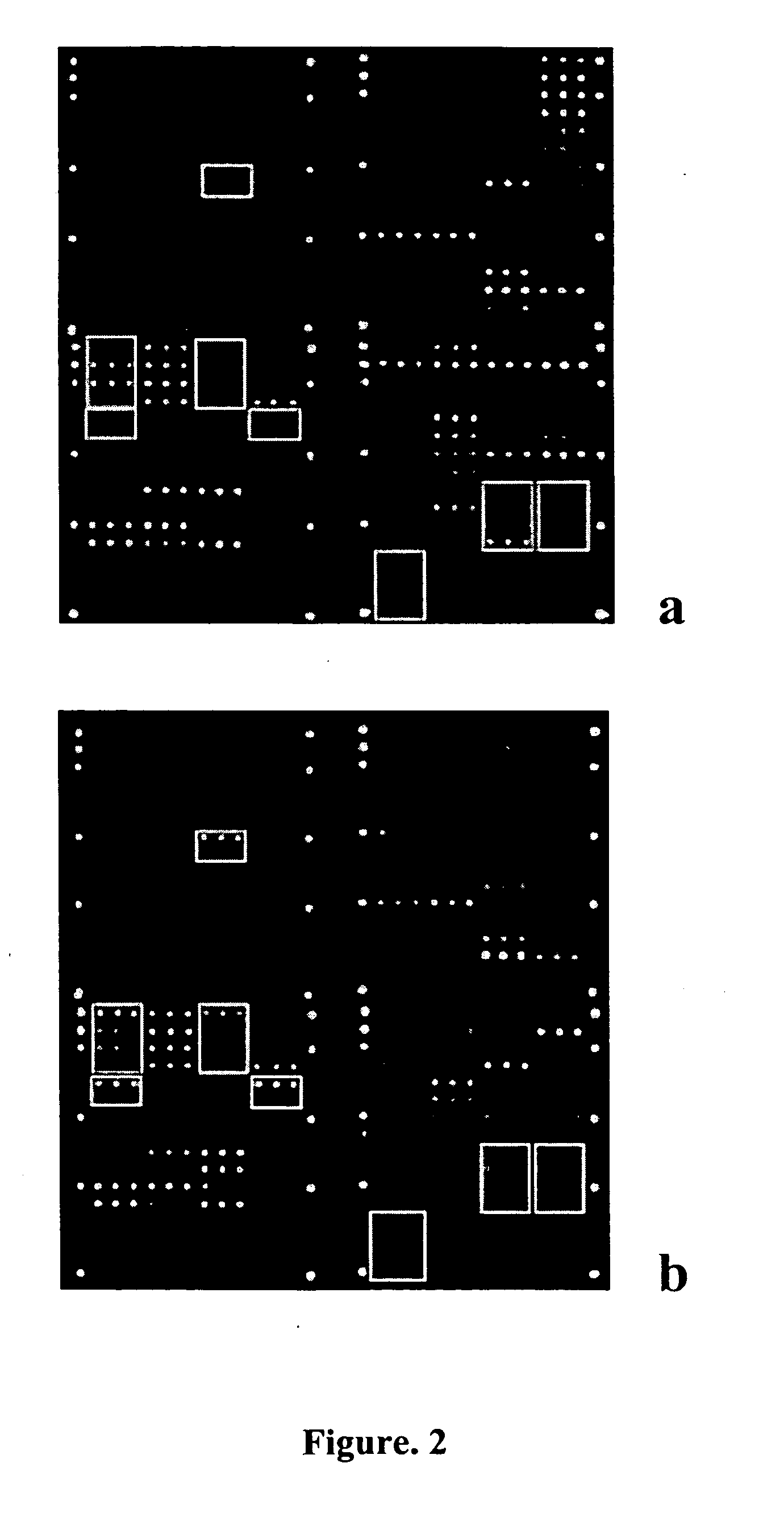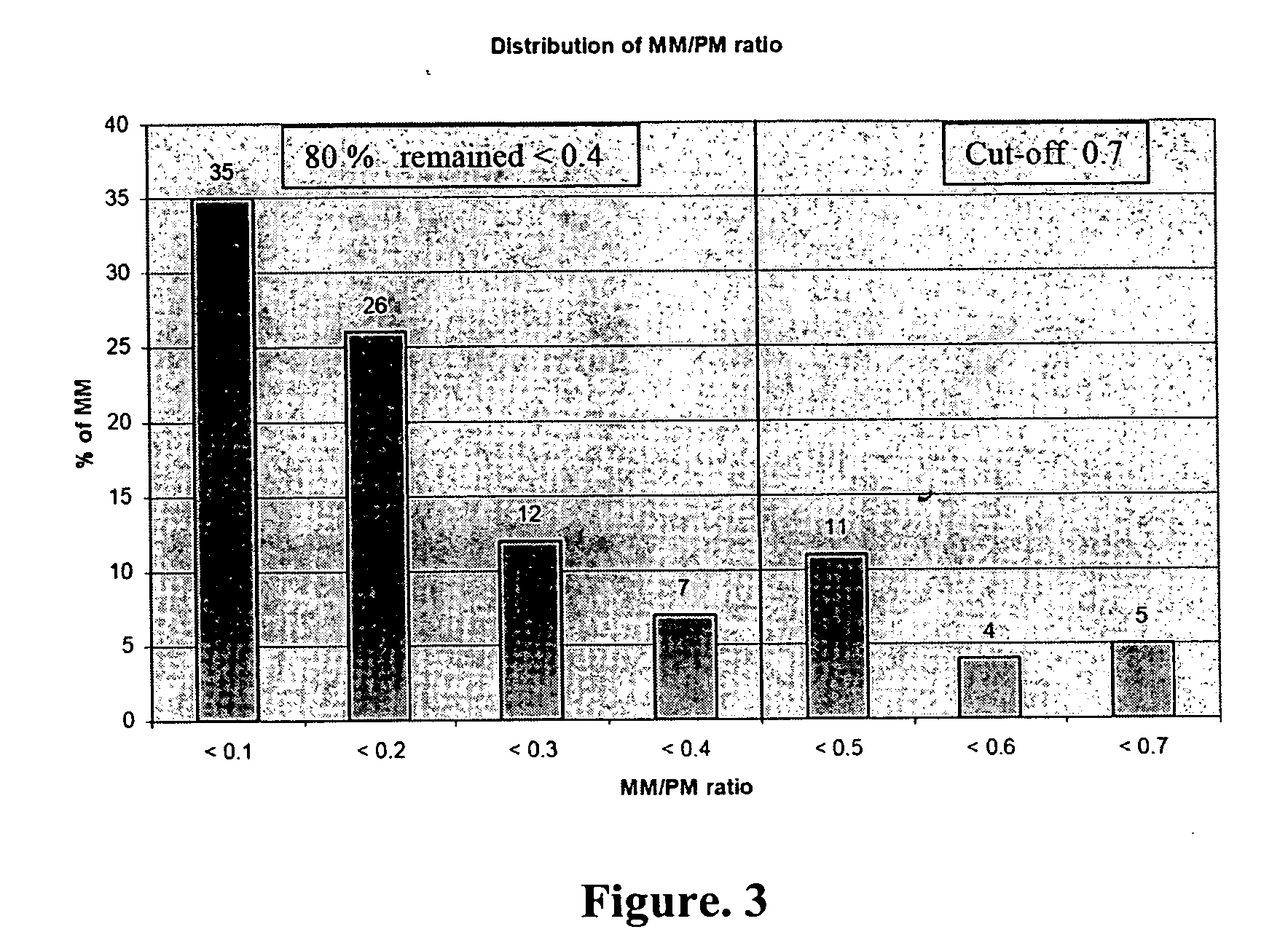Antibiotic susceptibility and virulence factor detection in Pseudomonas aeruginosa
a technology of virulence factor and pseudomonas aeruginosa, which is applied in the field of antibiotic susceptibility and virulence factor detection of pseudomonas aeruginosa, can solve the problems of limited number of samples to be tested, time-consuming, expensive, and inability to reliably treat critical ill patients, and achieve rapid, accurate and inexpensive identification of antibiotic resistance profiles. , the effect of broadening the information about the virulence potential
- Summary
- Abstract
- Description
- Claims
- Application Information
AI Technical Summary
Benefits of technology
Problems solved by technology
Method used
Image
Examples
examples
A. Bacterial Strains and Culture Conditions
[0064] The wild-type reference strain P. aeruginosa PAO1 was obtained from the ATCC (AT47085). The other P. aeruginosa strains were collected from patients at the Robert Bosch Hospital in Stuttgart, Germany. They were recovered from respiratory samples (n=51), swabs (n=5), urine (n=2) and faeces (n=2). All isolates were identified with the API 20NE system (bioMerieux, Marcy l'Etoile, France) and the NEG Breakpoint Combo Type 30 panel on the MicroScan WalkAway®-96 SI system (Dade Behring, Liederbach, Germany). All bacterial strains were either routinely cultured at 37° C. on Mueller-Hinton (MH) agar or grown in Luria Bertani broth (LB).
B. Antibiotic Susceptibility Testing
[0065] The antibiotic susceptibility was determined with the NEG MIC Type 30 panel on the MicroScan WalkAway®-96 SI system. The MICs were interpreted according to the NCCLS guidelines. The strains were tested for aztreonam (AZT), ceftazidime (CAZ), cefepime (CPE), piperac...
PUM
| Property | Measurement | Unit |
|---|---|---|
| area | aaaaa | aaaaa |
| specific wavelength | aaaaa | aaaaa |
| temperature | aaaaa | aaaaa |
Abstract
Description
Claims
Application Information
 Login to View More
Login to View More - R&D
- Intellectual Property
- Life Sciences
- Materials
- Tech Scout
- Unparalleled Data Quality
- Higher Quality Content
- 60% Fewer Hallucinations
Browse by: Latest US Patents, China's latest patents, Technical Efficacy Thesaurus, Application Domain, Technology Topic, Popular Technical Reports.
© 2025 PatSnap. All rights reserved.Legal|Privacy policy|Modern Slavery Act Transparency Statement|Sitemap|About US| Contact US: help@patsnap.com



